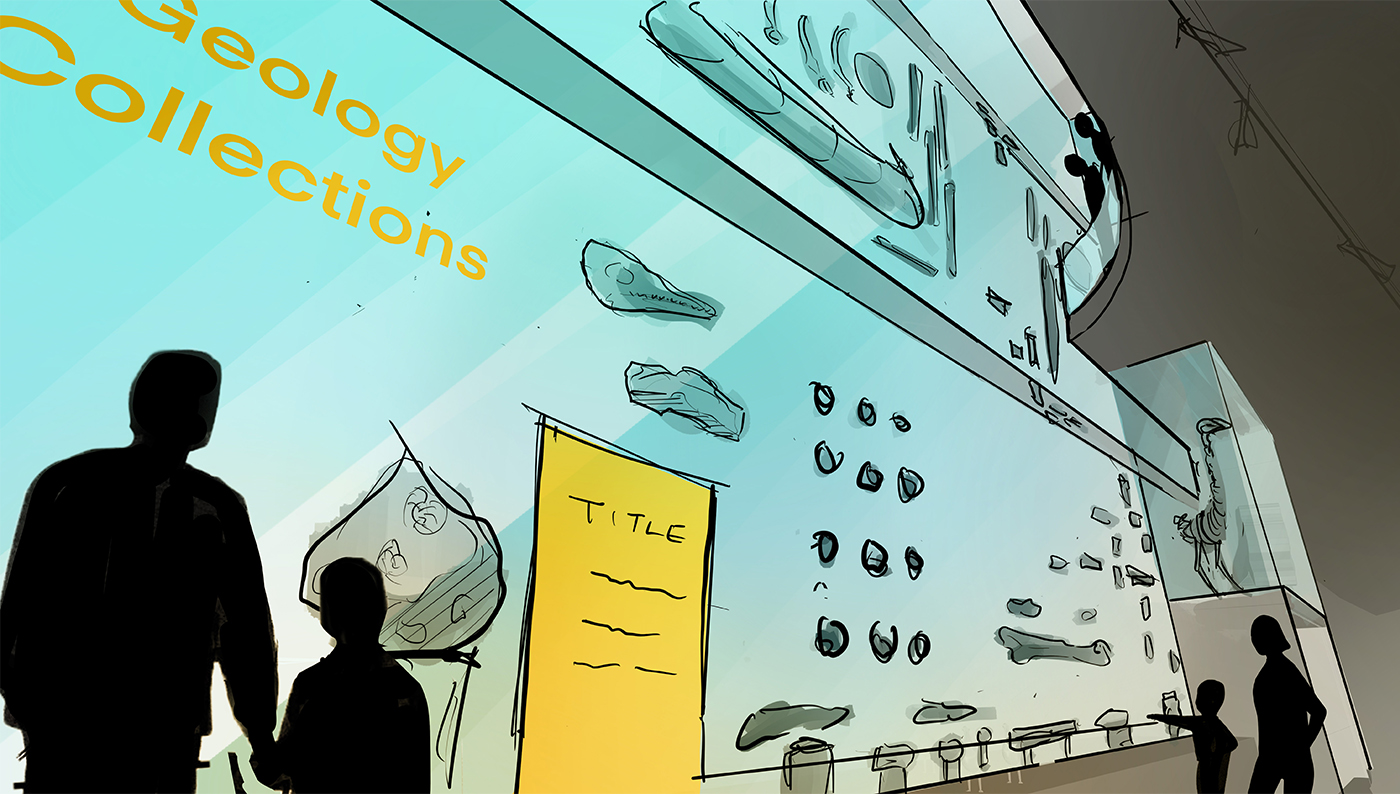

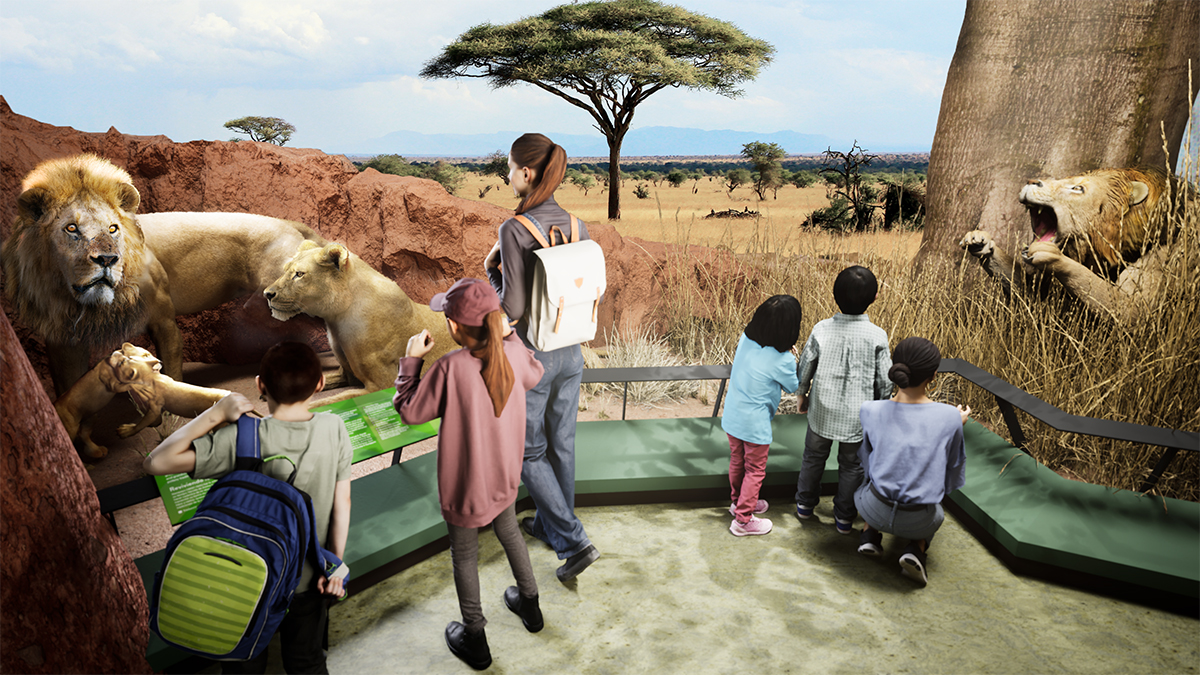
The Living in a Dynamic World gallery takes visitors on a journey across five of the world's landscapes—deserts, the Arctic, islands, grasslands, and mountains—to learn about the plants, animals, and humans who live within them. Each area will include immersive scenery to help transport visitors to that landscape, as well as displays focused on specific cultural groups that have been developed in consultation with the origin communities.
Mosaics
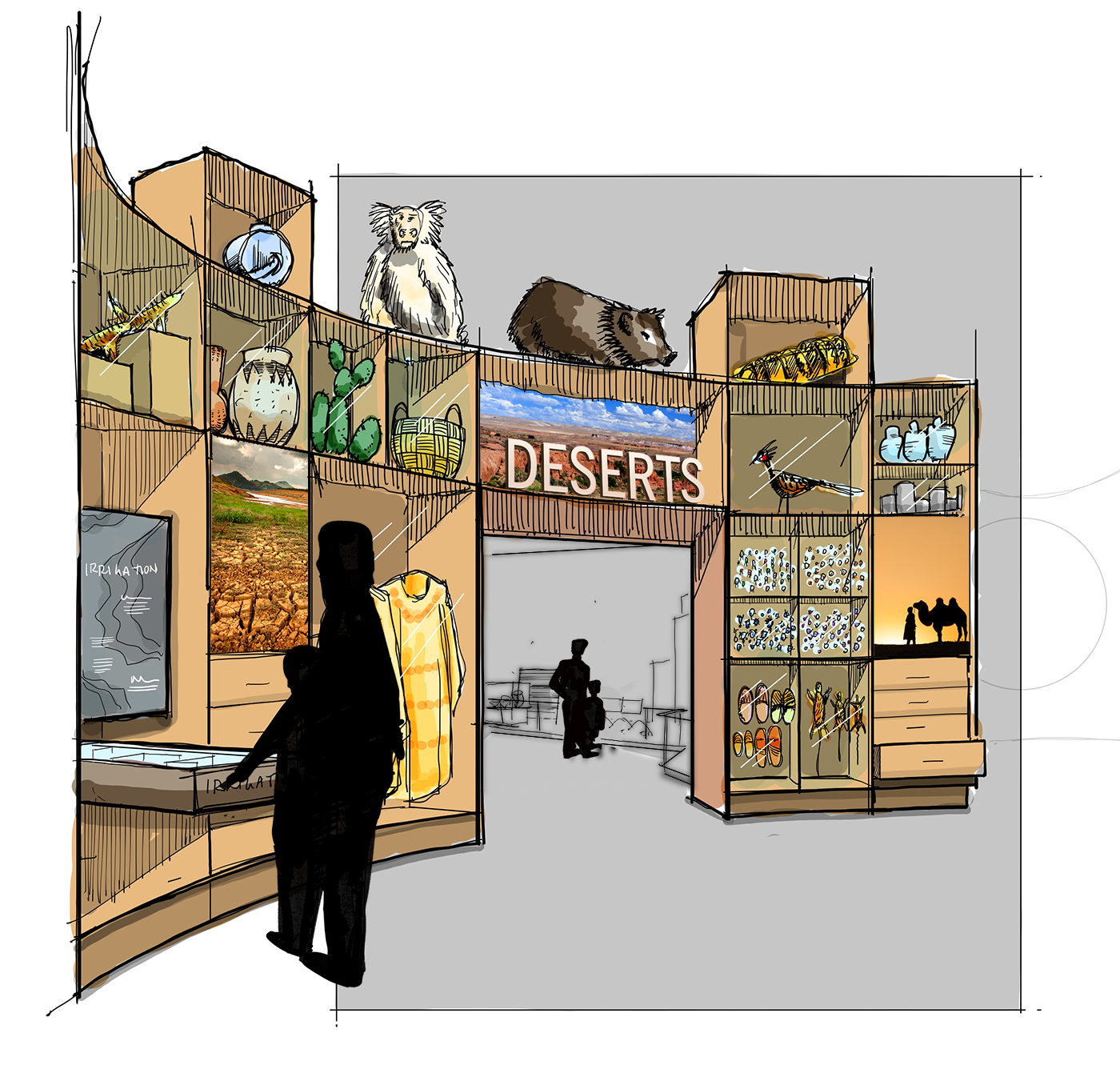
At the entrance of each hall will be a Mosaic—a portal into the distinct landscapes. Decorated with cubbies of curiosity to discover and drawers to open, the Mosaics will feature items that define each landscape but also showcase its diversity across the world, preparing visitors for the immersive experiences that lay ahead.

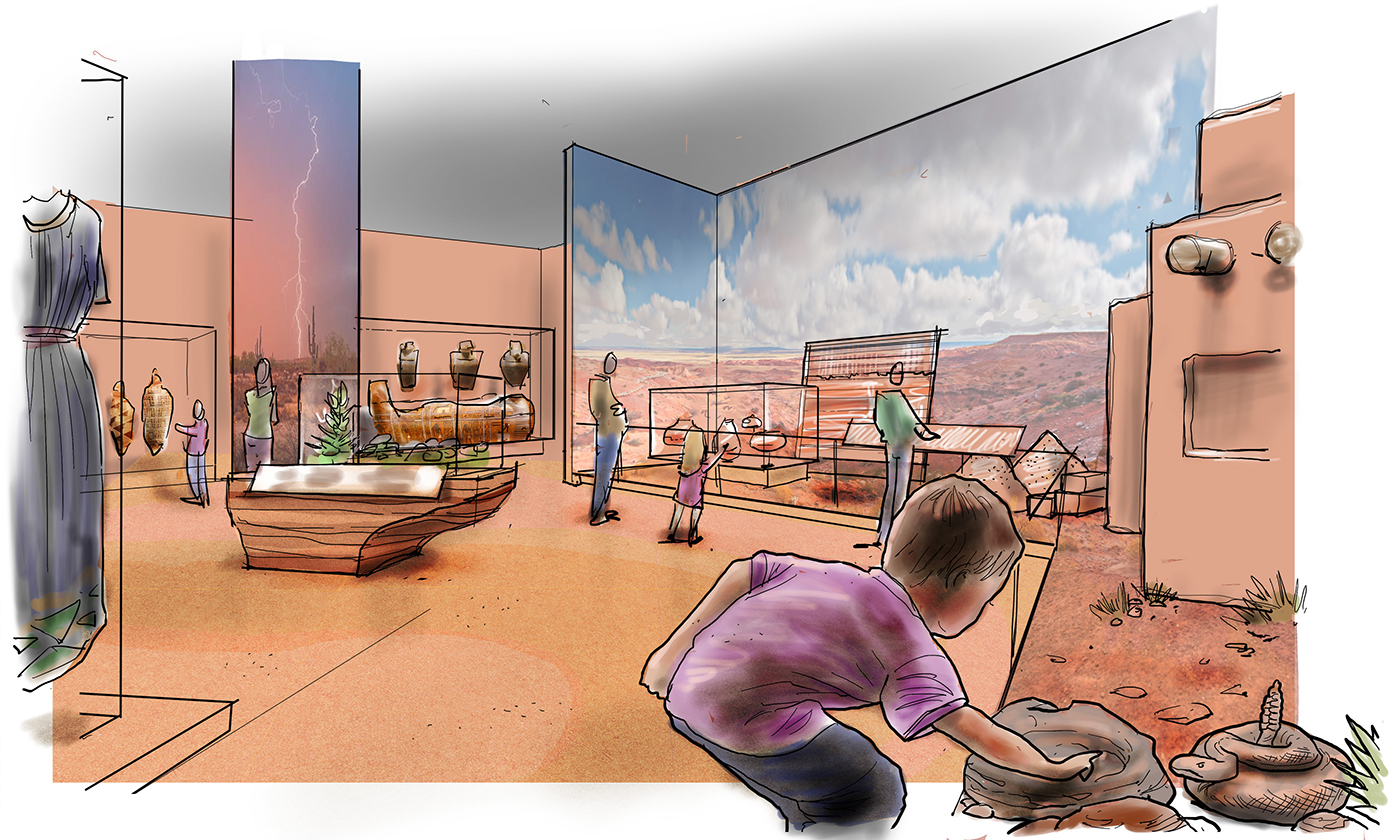

Deserts
Life in the desert, where water is scarce and temperatures are intense, is stunningly resourceful. This exhibit will explore how the desert's dynamics — like water access, extreme temperatures, and unique flora and fauna — have shaped life past and present for its residents.
Supported by the wide range of ceramics, textiles, and agricultural items in the Museum's vast collections, the Deserts hall will spotlight the distinct environment of Northeastern Arizona.
Cultural Case Study: Hopi Nation
At the center of cultural exploration will be the Hopi Nation. Visitors will learn about the cultures and traditions the Hopi people have developed in response to their environment as well as how they have adapted their day-to-day habits to meet the land.
Among the exhibits in this hall, visitors will see a replica of a traditional Hopi dwelling — echoing the structural exhibit elements of the Southwest area currently on MPM's Second Floor — and learn about how the land is used to build shelter. The exhibits will also highlight Hopi pottery and tell stories about how the landscape's resources have influenced artisan traditions.
The Hopi Nation are a living, thriving community who practice traditions that are hundreds of years old. Visitors will be able to learn about this contemporary culture while also looking back in time to see what has changed and what has remained the same.
Cultural Counterpoint: Ancient Egypt
Deserts will also take visitors thousands of miles across the globe and thousands of years into the past with a cultural counterpoint, Ancient Egypt. These exhibits will explore how the desert impacted Ancient Egyptians' beliefs and practices around death, answer questions about why mummies were made in the first place, and dive into the symbols, icons, and myths connected to death traditions. On display in these exhibits will be collections items including funerary objects and a sarcophagus.
Another inhabitant of the desert? Snakes. In Deserts, visitors will be able to continue the cherished tradition of finding a rattlesnake button. Exhibits will also explore the ways humans have had to adapt their footwear to protect themselves from snake bites.

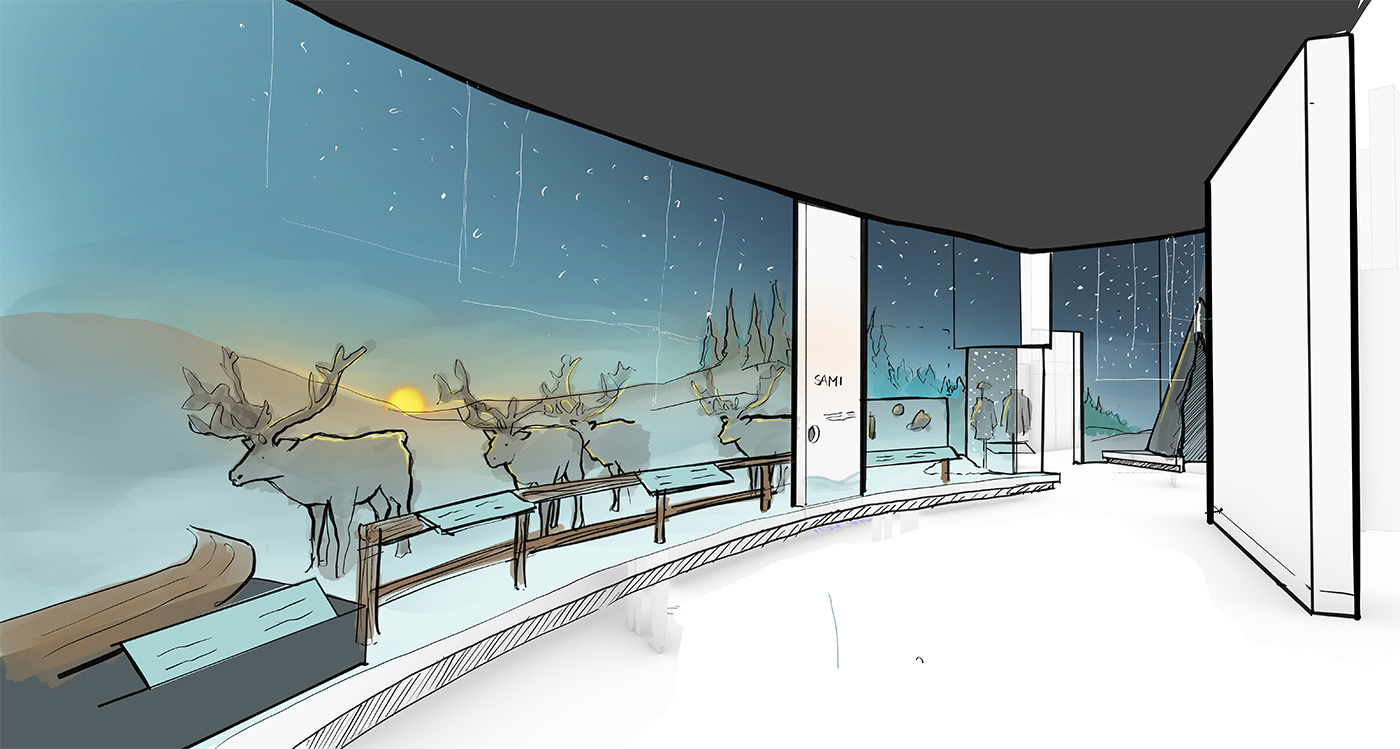

Arctic
Visitors will learn about one of the most extreme landscapes on the planet and how, despite that, it provides for a wide variety of life forms and cultures.
Cultural Case Study: The Sami
The Arctic will put a cultural spotlight on the Nordic Sami people. A key immersive scene will situate visitors on a vast northern-European tundra during a midsummer night, where dozens of reindeer (which are currently on display at MPM) will munch on moss against the background of a dusky pink sky, the sun still above the horizon at midnight.
Exhibits will examine how the Sami have shaped and been shaped by their Arctic landscape through adaptations in clothing and insulation, how they get their food, fuel, water, and other resources, and their domestication of reindeer. Visitors will also be invited into a traditional Sami tent, or lavuu, to warm up and immerse themselves into the scene while learning more about Sami culture and customs.
Cultural Counterpoint: Inuit
Another scene will illustrate a different Arctic landscape, culture, and time of year: the Inuits on the North American ice during a midwinter day. Walruses from the Museum's collections will rest on ice floes against an immersive wallpaper and projection surface that creates a starry night sky shimmering with the Northern Lights. Stories about hunting and ice fishing will teach visitors about how residents of the Arctic adapt to their environments to get food.

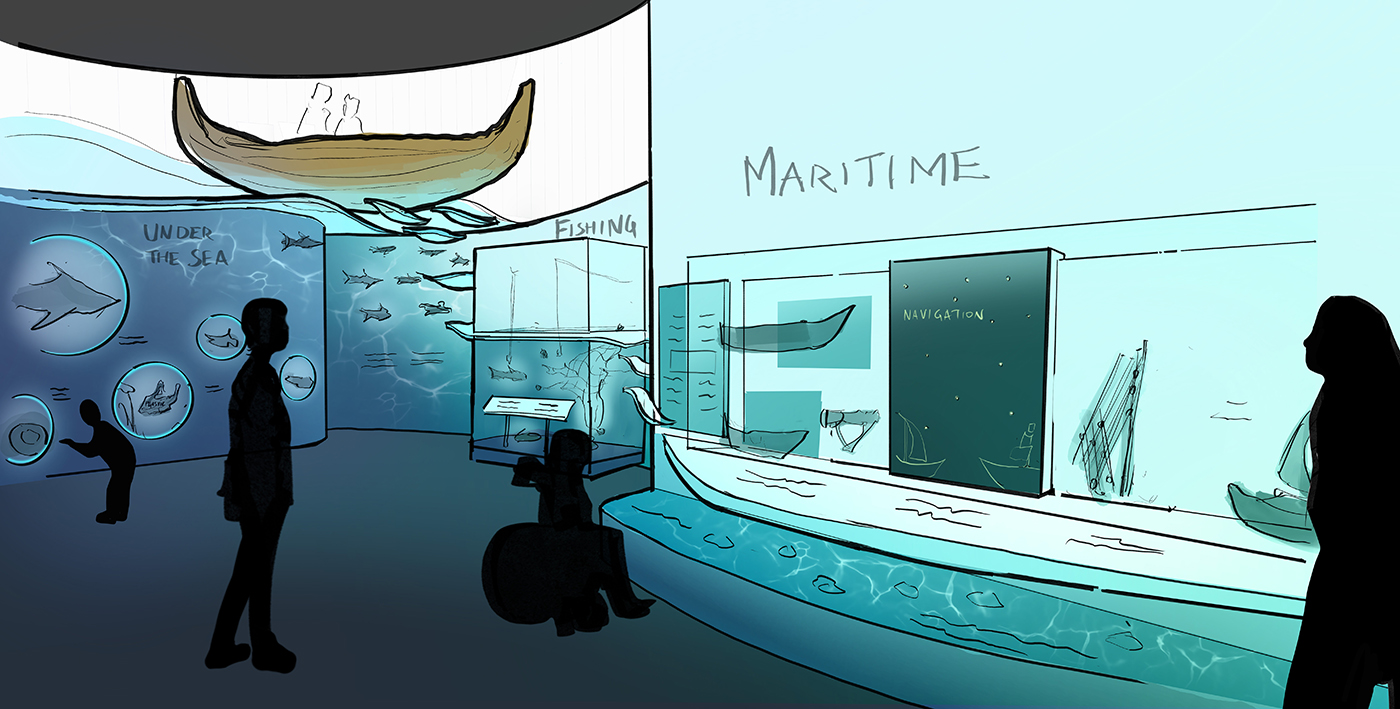

Islands
A unique landscape surrounded by water. Visitors will learn about the array of life - including plants, animals, and humans - that adapted to thrive in isolation. The Islands hall will demonstrate the impact of isolation on nature, including stories of speciation and what it means for a certain species to exist in a limited geographical area, but also look at islands that aren't so remote, helping connect people and organisms to larger land masses.
Seafaring and Maritime Navigation
In a series of scenes that start on the surface of the water and progressively dive deeper into the sea, visitors will learn about maritime navigation and how people have gotten around islands. These exhibits will also explore the different animals and fish that live in the water, the impact that pollution has on both the ecology of oceans and islands, and the communities that rely on the land for resources and industry.
South Pacific Cultures
This landscape will look at how different cultures in the South Pacific have used their natural environment to create tools and weapons for survival but also to create items for adornment and leisure—including sea shells and tortoise shells for jewelry or money, and bamboo for clothing and instruments. This area will showcase tattoo cultures and the traditions behind ornamentation of the body as well.
The exhibits within the Islands hall will also focus on life and culture of an Indigenous people of Japan, the Ainu. Islands is also one of the rare moments where there will be a window; the natural light from outside will be used to add dimension and movement to the underwater scene as a boat floats overhead.



Richard & JoAnn Beightol Hall: Grasslands
Grasslands and plains are home to an abundance of life, including our planet's largest land animals and most bountiful agricultural areas. Visitors will learn about this biodiversity, and the ways of life, supported by these landscapes.
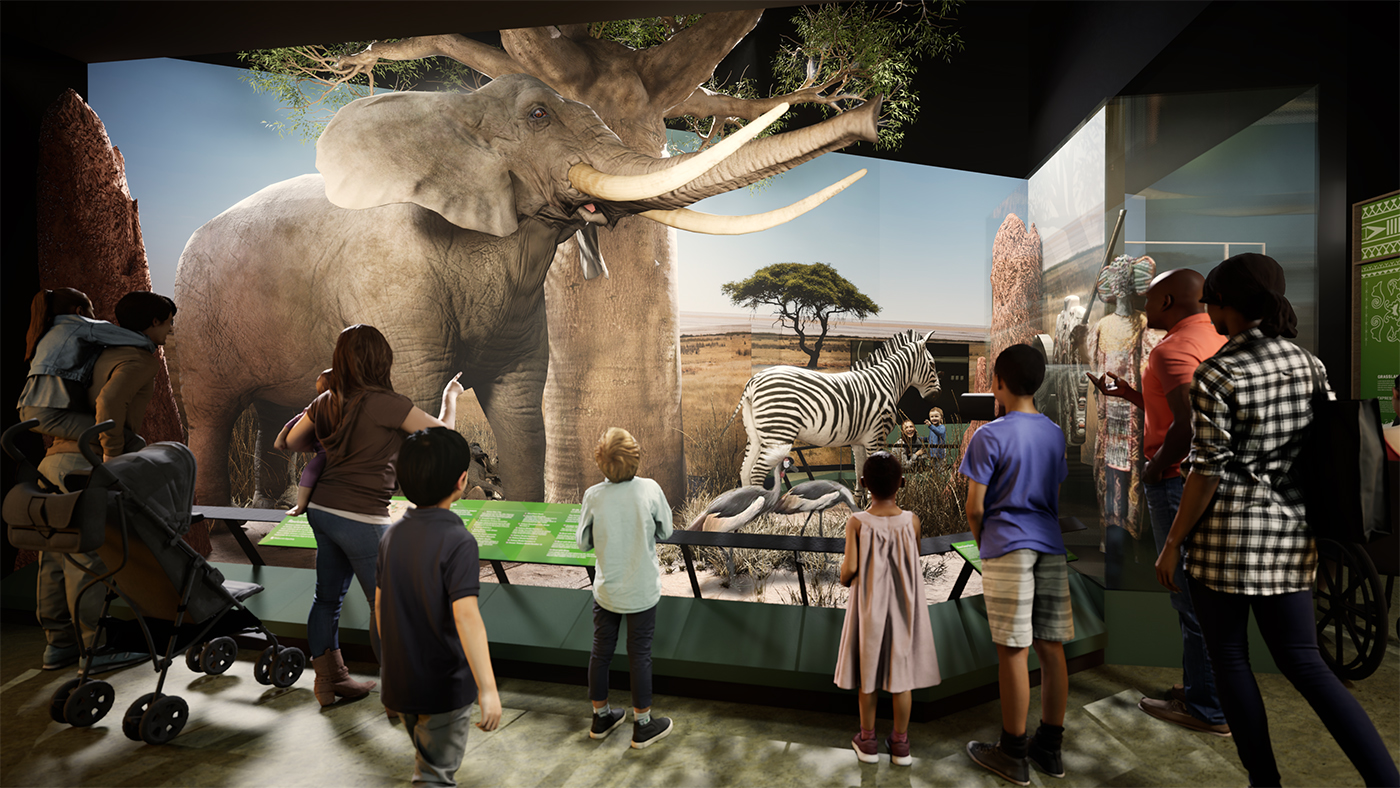
African Serengeti
In Grasslands, visitors will be immersed in the African Serengeti. Exhibits will showcase the individuals, communities and animals who would have resided in that particular grassland — including Timba the Elephant and Simba the Lion, two familiar features currently on display at MPM. Hidden in the tall grass, another lion will be hiding and ready to pounce on its prey.
Cultural Diversity
Exhibits in Grasslands will also explore the people and human cultures of the Serengeti and how communities and customs have been shaped by the grassland landscape — including hunting, herding, animal husbandry, and agriculture, around the world and throughout time.
Grasslands will also bring visitors back to the American Plains to look at Indigenous Plains peoples and how their environment is similar and different.


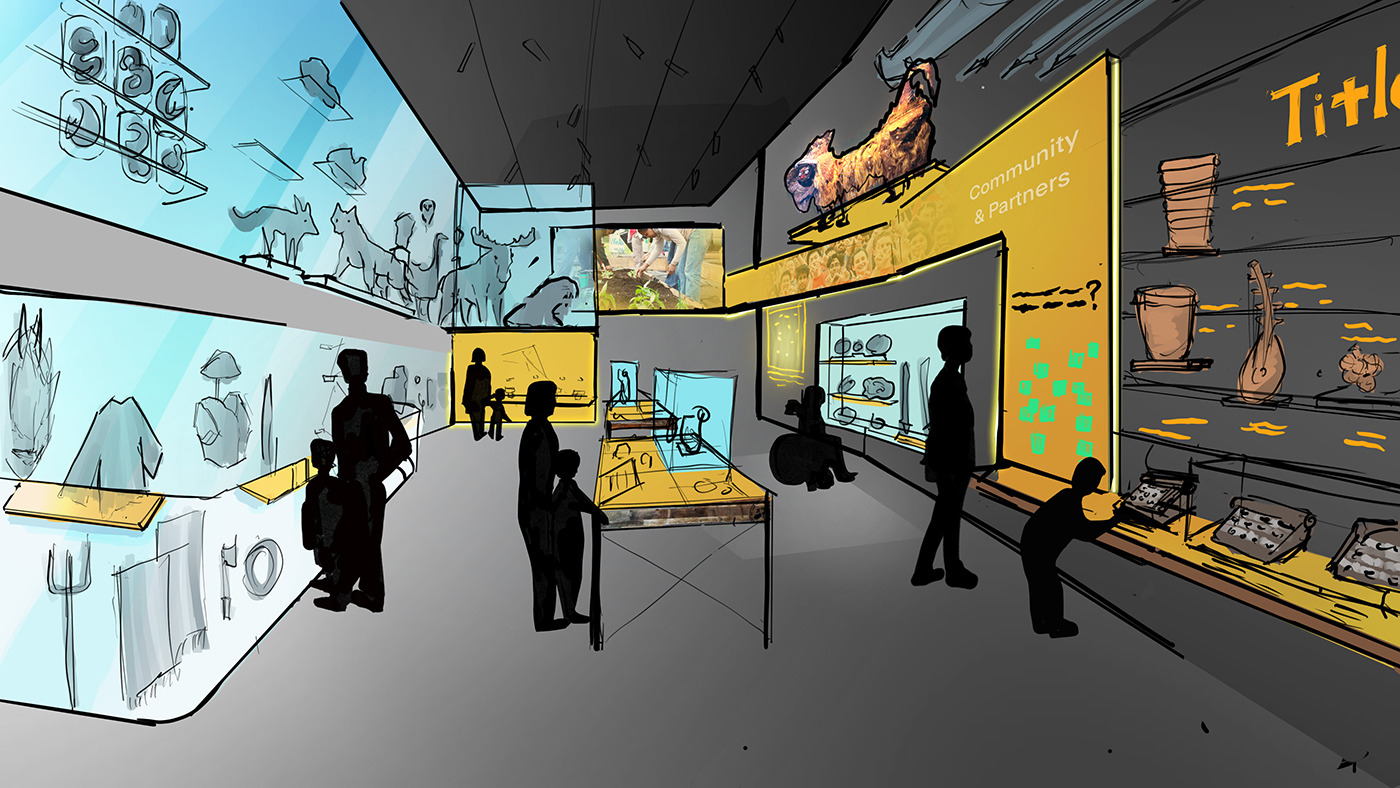
One of the goals of the Nature & Culture Museum of Wisconsin is to ensure visitors can experience special, never-before-seen looks into the collections — including the millions of items that have historically been off-view as they are kept for scientific research.
A new and exciting concept, the Museum will include two Nature and Culture Connectors — special flexible gallery spaces that will allow Museum staff to rotate displays of collections items, ensuring visitors can learn about different ideas, cultures, and moments in history over the course of several visits. You may even see a familiar face: Samson the Gorilla.
Three-story Showcase
Visible from multiple floors, a dramatic glass case will show off a breadth and variety of items from the collections in the Museum's care, ranging from ancient fossils and glittering gems, to boats, textiles, children's toys, and taxidermy. Placards and signage will help visitors understand the stories behind the objects and specimens on display.
Nature Connector
This Third-Floor Nature Connector focuses on how the Museum works from the inside out. Exhibits that visitors may see here include Carl Akeley's famous Muskrats diorama — the Museum's pioneering “Milwaukee-style” exhibit, which set the standard for natural history museums around the world and sparked widespread use of diorama-style exhibits that set objects in exhibits that portray the context that object would naturally occur in. The space will also be a place for visitors to gather for hands-on science education.
Burke Foundation Culture Connector
Situated next to the Living in a Dynamic World gallery on the Fourth Floor, this Culture Connector will remind visitors that different cultures offer varying perspectives on the Museum's collections, each other, and the world, demonstrated primarily through cultural and zoological collections items. It will be a space where experts from both within and beyond the Museum can share what they are learning, and where skilled artisans and storytellers can practice their craft. A platform for storytelling and community-generated research and initiatives, the space will be dedicated to flexible exhibits, public interaction, and special events and programs for the community to participate in.
